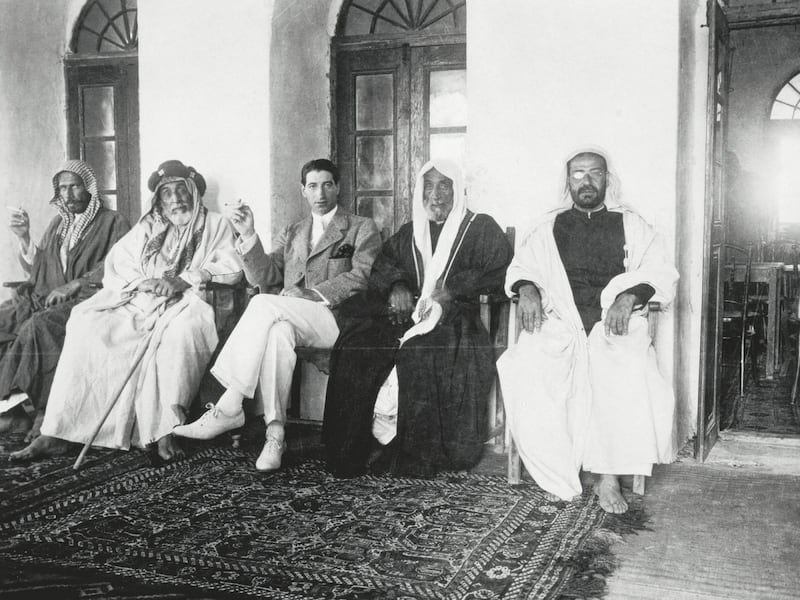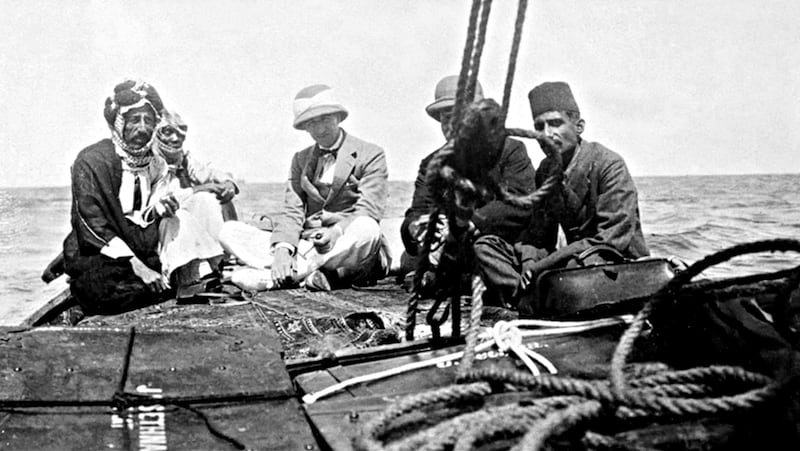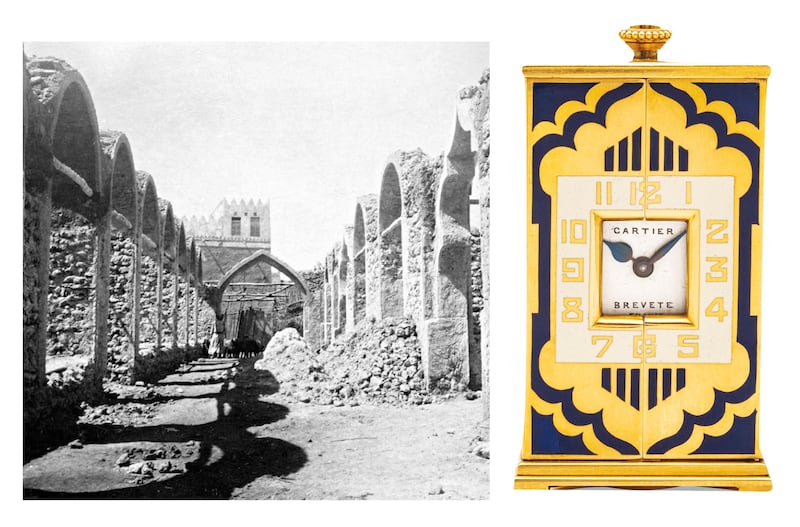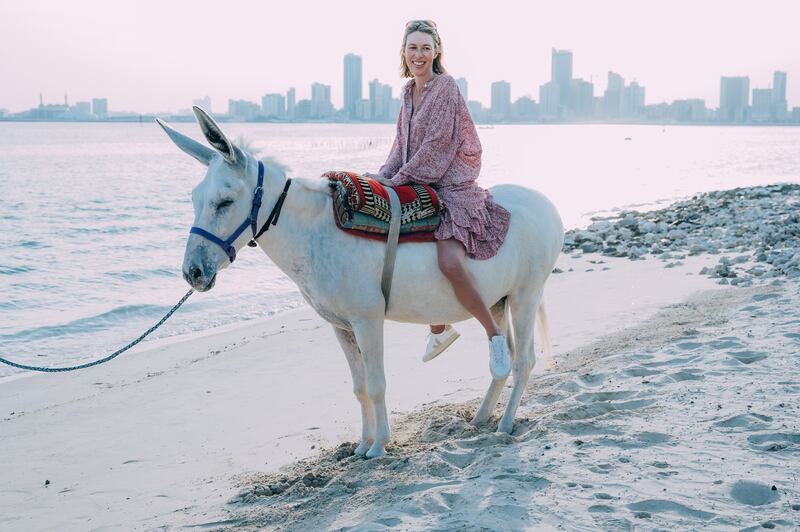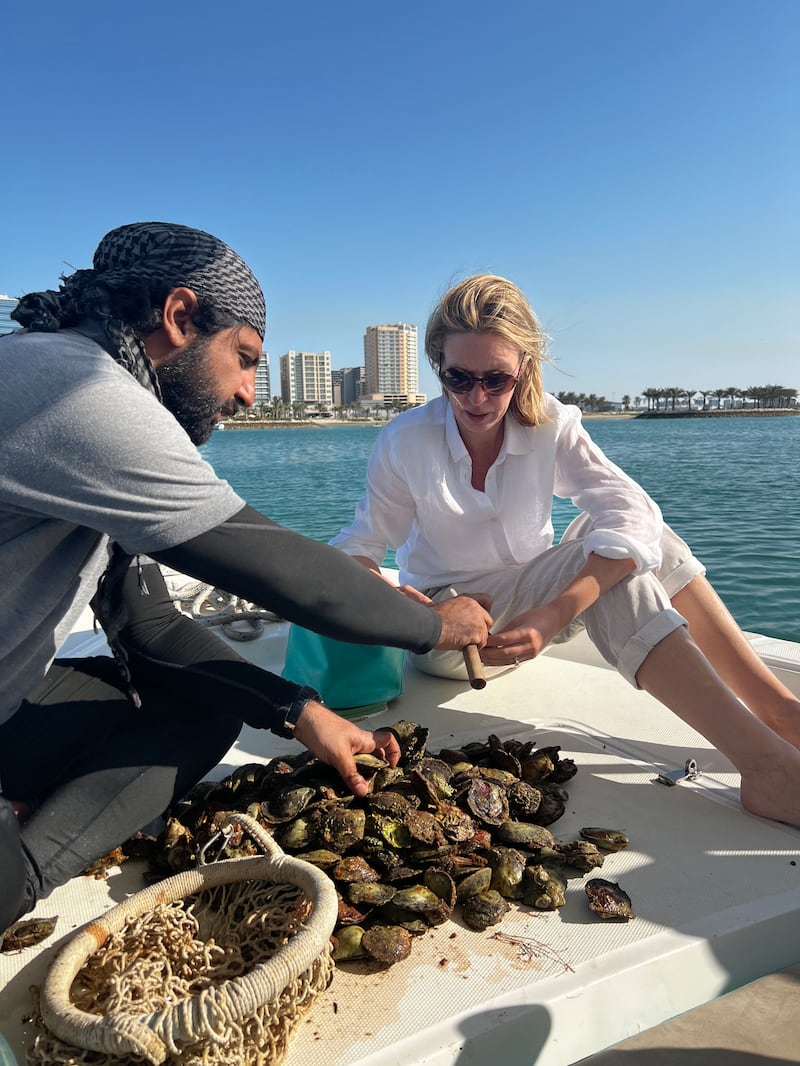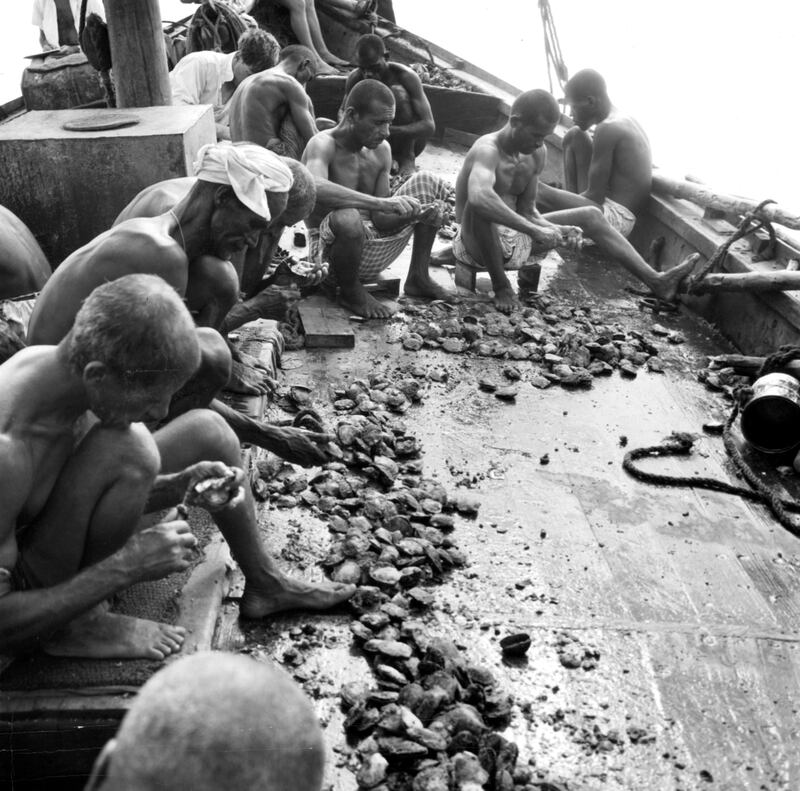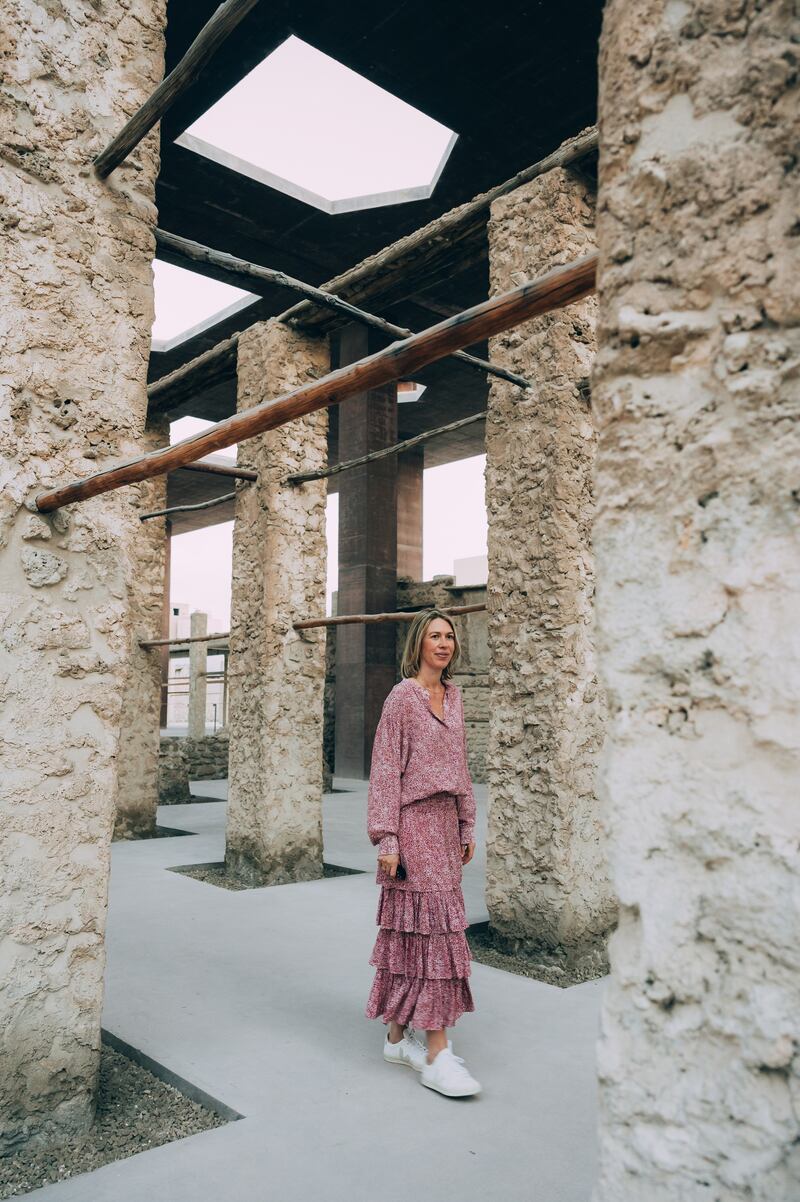When Jacques Cartier arrived in Bahrain in 1912 his task was a simple one: find a way to source the best pearls.
He was one of three brothers that would turn what was then a small Parisian jewellery shop into the global luxury brand we know today.
And one way to do this was to become known as importers of natural pearls.
At the time, pearls were so rare that people desired them even more than diamonds, and those from the Arabian Gulf, and Bahrain chiefly, were particularly prized.
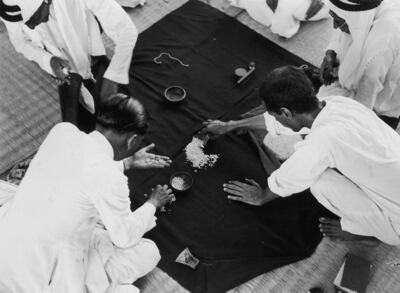
“We think of Cartier as a jeweller,” Francesca Cartier Brickell told The National.
“Back then it was more important for them to be known as a pearl importer than a jeweller, which I think is extraordinary. A pearl necklace had the same value as a Rembrandt painting.”
Ms Cartier Brickell, a direct descendant of the Cartier family, has just returned from Bahrain where she retraced her great-grandfather’s footsteps there 110 years ago. She is also the author of The Cartiers, a 2019 book about the company that focuses on the three brothers ― Louis, Pierre and Jacques.
Louis is often credited as being the creative genius who propelled Cartier to international fame; Pierre was the master dealmaker; but Jacques’ globe-trotting adventures in the Middle East and Asia were also crucial to Cartier's success. And his 1912 visit would go far beyond this original mission to simply establish a supply line.
Jacques, then in his 20s, set off from his London base in 1911. First he sailed to India to meet the maharajas, make contacts and find out where he could buy the finest gemstones.
His contacts with India were important. Cartier sourced gemstones from there and conducted lucrative business with the maharajas, while Cartier's famed “tutti frutti” creations ― sapphires, rubies and emeralds sculpted in the shape of leaves, buds and berries ― were inspired by India.
But Jacques was also instructed by his elder brother Louis to visit Bahrain to find out how the company could directly source pearls. It was a time when natural pearls were sought after by the world’s royals, business tycoons and elite. Cartier's townhouse in New York was bought with pearls, while the Britain's Queen Elizabeth II received Bahraini pearls as wedding gifts.
The brand was also beloved by the likes of Elizabeth Taylor, Grace Kelly and Coco Chanel.
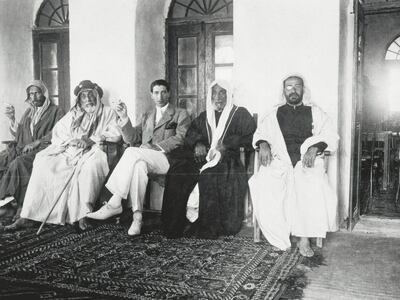
Bahrain in 1912 was at the centre of this pearl trade. Great pearling fleets left Muharraq, then the capital, for the waters around its shores where prized oyster beds lay. It was tough, arduous, backbreaking work for those on the ships, but it generated enormous wealth for some.
Traders flocked to Bahrain, merchants built mansions with striking wind towers, while its pearls sold for vast sums abroad. It was a lost world of boat captains, pearl divers, traders, creditors and sail-makers. And Jacques did not want to simply buy pearls, but immerse himself in this world.
“He went on pearl fishing boats; spoke to the merchants; and had meals with them,” she said. “He wanted to ... eat the food and speak to people.”
Striking black-and-white photographs of his trip freeze Bahrain in time. They show Jacques meeting pearl merchants, sitting on a boat deck and exploring the country. This was a Bahrain entering the twilight of the pearl trade, because only a few decades later the discovery of cultured pearls in Japan would upend the market. But in 1912, everyone wanted pearls.
They were hard to find and even a necklace could take years to complete given the difficulty of finding the right size and shape.
“Jacques spoke about being on a pearl fishing boat for a blisteringly hot few hours and got so many shells but not a single pearl of any note," she said. "So if it takes that long to find one pearl, imagine finding two which are similar enough to make a necklace.”
After the trip, Cartier advertisements soon began to portray the company as pearl importers and suppliers. Photos Jacques took were also transferred into sketches to show Cartier as being highly connected to the trade with a direct line to the sheikhs.
“This was maybe implying more than was the case,” said Ms Cartier Brickell, who was inspired to write her book after finding a trunk of letters in her grandfather's cellar.
“But they had relationships with those people and one can’t overestimate the importance of pearls for Cartier then.”
But the visit to Bahrain and India also left another imprint. Something much more profound. Ms Cartier Brickell has leafed through several small diaries carried by Jacques in Bahrain where he jotted down ideas, observations and even impromptu sketches of what he saw, such as local motifs, Islamic shapes and regional building designs he would not have seen in Europe.
These then start to inspire Cartier jewellery. A Cartier desk clock known as an "altar", for example, clearly takes inspiration through its use of local motifs such as the arch.
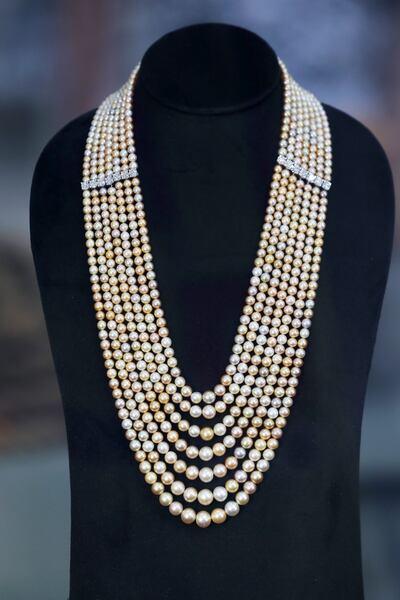
“I think he came back with something else ― not just business connections and stones. He came back with inspiration for a new type of jewellery. The purest influence on style came from the Middle East and India.
“Cartier’s motto is ‘never copy, create’,” she said. “It was not obvious but they were inspired.”
During her time in Bahrain, Ms Cartier Brickell participated in the Jewellery Arabia Exhibition where she visited the stand of the Bahrain Institute for Pearls and Gemstones (Danat). Bahrain is trying to revive its pearl sector which stretches back thousands of years, by promoting sustainable pearling and highlighting its rich past. Danat is a key part of this. Unesco, the UN's cultural body, in 2012 awarded Bahrain's pearling history world heritage status.
Ms Cartier Brickell, who has no ownership link or managerial involvement with the Cartier company of today as it no longer owned by the family but Swiss company Richemont, also gave a talk about Jacques' visit and even recreated some of his photographs from that 1912 trip.
“A lot of books talk about Louis Cartier ― the elder brother in Paris who was the creative genius ― and didn’t talk so much about Pierre and Jacques," she said.
"So it was lovely for me to go to a place where people felt that connection with Jacques. It was really moving. I got quite emotional.”
